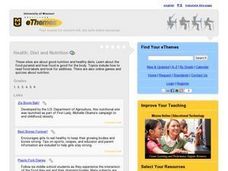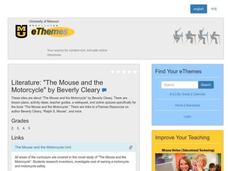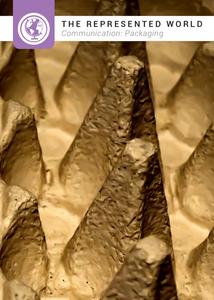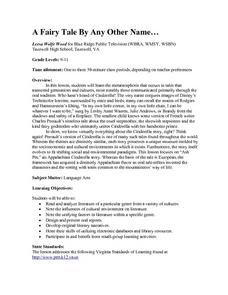Curated OER
Bubble and Squeak
Students complete a unit on the chemical and technological processes of food preparation. They observe various experiments, describe changes in materials through cooking, identify safety and hygiene issues, and cook various recipes.
Curated OER
Mining Minerals
Students define the properties of minerals and their uses in their world. In this multi-lesson unit, students contribute actively to discussions of mineral mining, mining methods and mine safety. A role play lesson asks students to...
Curated OER
Technology: Computer Basics
Students access a variety of resources on the Internet related to basic computer operations and parts. They examine the parts of a computer and the history of computers, view timelines, play games, and read tips on Internet safety.
Curated OER
Health: Diet and Nutrition
Students access a variety of nutrition and health related resources on the Internet. They examine the food pyramid, match food groups, play interactive games, read an online story, analyze the labels on food packaging, and take a...
Curated OER
Summer Health Activity: Visiting the Doctor
Students play with dolls to act out feelings about a common experience. In this early childhood lesson plan, students use social, language, and fine motor skills while developing an understanding of their own bodies and the role of an...
Curated OER
Discernment
Students are encouraged to have a sense of the importance of being able to make wise choices. They discuss alcohol abuse and crime and safety. Students comprehend the nature and consequences of anti-social behaviour. They recognize...
Curated OER
Great River Bend Adventure
Students use their imagination. They discuss the 4 C's of teamwork: Concentration, Communications, Coomperation, and Consideration. Students discuss the safety guidelines of the project. They complete a rope maze. The group walks...
Curated OER
Sweet or Unsweet?
This lesson challenges middle schoolers to make their own judgments about the safety of artificial sweeteners after hands-on study and Internet research, and to support those judgments with carefully considered evidence and reasoning.
Curated OER
Strange Encounters
Third graders examine a variety of Robert Harris' paintings. Using the characters in the art, they develop a conversation between them in a musical verse. In groups, they identify safety procedures to be used by those traveling in the...
NNF
Floods Happen
Did you know that flooding is the most common natural disaster in the United States? Prepare your learners with the facts about floods and offer them the proper knowledge and tools for dealing with this type of emergency.
Curated OER
The Mouse and the Motorcycle
Students read Beverly Cleary's The Mouse and the Motorcycle. They review various interactive Web sites containing quizzes and activities related to the book.
Pasco Middle School
AVID Socratic Seminar
Developed specifically for AVID students, this packet of materials that includes an explanation of the Socratic seminar, the preparation materials, and tips and protocols, is a must-have resource for any class.
MDE k-12
Lesson 5: The Journey Becomes Larger Than Life!
Many muralists throughout history have focused on using their art to represent aspects of their culture or community. After thoroughly researching several muralists, budding artists will create a larger than life mural that contains...
Curated OER
Fossil Fuels (Part III), The Geology of Coal
Do not overlook this set of lessons just because your school does not have a data analysis system. There is plenty of material here to administer a complete mini unit on the formation, distribution, and properties of coal. Since it...
Indiana Department of Education
The Represented World: Communication—Packaging
Challenge your classes to design and market a new product. Collaborative groups use geometry skills to create packaging for their products. Finally, they plan a marketing strategy to present to a marketing specialist.
Education Center
What a Team!
Use a learning exercise about Officer Buckle and Gloria to show learners how listeners feel about each character. Though the resource itself only includes a summary of the story, the learning exercise would be a good addition to a...
Curated OER
The Call of the Wild: Silent Discussion
Give a voice to even the most quiet learners! Post discussion questions in different locations (on the whiteboard or around the room on posters). Class members then either answer a question posed or comment on a peer's response. Instead...
Cornell University
Build a Fuel Cell
Discover the connection between redox reactions and fuel cells. Collaborative groups build a Hoffmann Apparatus that demonstrates the electrolysis of water and then convert their models into a fuel cell. They use their fuel cells to...
Cornell University
Friction
Friction and gravity are always at odds! Learners complete a set of activities to explore the relationship between friction and gravity. Groups make conclusions about the factors that affect the amount and type of friction between surfaces.
Cornell University
What Happens When We Excite Atoms and Molecules?
Excited atoms lead to exciting lessons! Learners use heat and light to excite both atoms and molecules. They display their learning in the form of Bohr models depicting the excited state of the atoms.
Cornell University
Thin Films
Combine mathematics and science to calculate measurements of unmeasurable materials. Individuals use knowledge of density and volume to determine the thickness of the film used in production. They also apply stoichiometry to...
Curated OER
A Fairy Tale By Any Other Name
Many classic tales, like "Cinderella," can be found worldwide. Bacis events are similar, but each retelling is molded by the culture in which it exists. Present your class with several version of tale (links provided) and have them...
Curated OER
Chemical Consequences of Burning Fossil Fuels
Future scientists are introduced to the chemical consequences of burning fossil fuels, learning that fossil fuel combustion leads to the formation of oxides of three nonmetals: carbon, nitrogen, and sulfur, all of which end up in the...
PBS
Heart to Heart
Study heart health and math in one activity. After measuring their resting heart rates by finding the pulse in their wrists, learners build a stethoscope to listen to their heart rate, and note the differences between the two methods.























